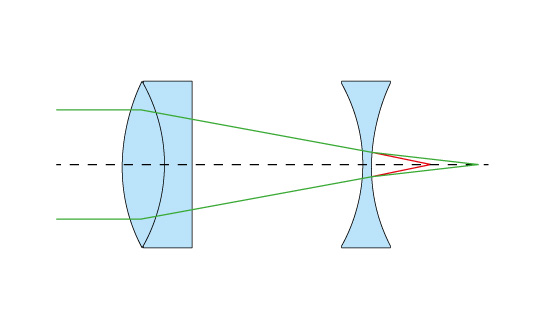Glossary | Telescopes | Included accessories | Barlow Lens
What exactly is a Barlow lens?

A Barlow lens is an optical component which is deployed between the eyepiece and the focuser. Inside there is a negative lens, which artificially lengthens the focal length of the telescope. Often the Barlow lens is not a single lens, but a system of lenses. This usually also serves to reduce chromatic aberration. In this case the lens is often referred to as an achromatic Barlow lens. The standard lenses have a 2x magnification factor.
This is how a Barlow lens works
The function of such a lens can best be explained using an example: let us look at a 200/1000-mm Newtonian reflector, such as the Omegon Advanced telescope. In addition, an eyepiece with a 6 mm focal length is used. The magnification formula results in a 166x magnification. The lens extends the focal length of the telescope by a factor of 2 from 1000 mm to 2000 mm. Using the same eyepiece, this results in a twofold magnification of more than 330x.
So with an eyepiece and a Barlow lens you can get two different levels of magnification. Of course, you have a much larger variation range with a selection of eyepieces and a Barlow lens.
